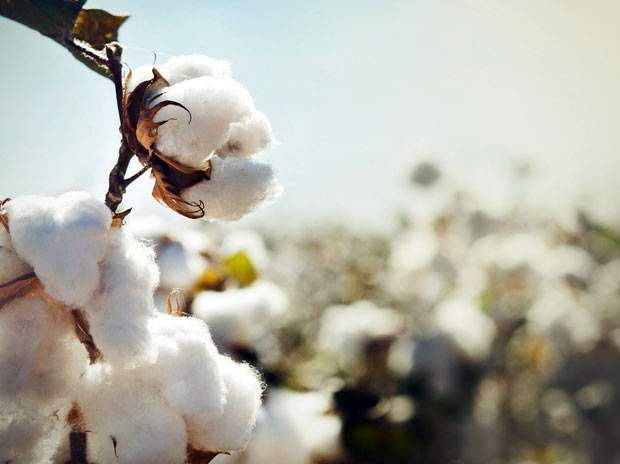http://economictimes.indiatimes.com/news/politics-and-nation/high-court-stops-nuziveedu-seeds-from-selling-bt-cotton-under-monsanto-brand/articleshow/51060790.cms
NEW DELHI: Delhi High Court today restrained Indian firm Nuziveedu Seeds from selling Bt cotton seeds using the trade-mark of US-based agro major Monsanto’s Indian arm Mahyco Monsanto Biotech Ltd (MMBL).
Justice Vipin Sanghi also asked the Hyderabad-based seed company to pay the royalty to MMBL, a joint venture between US-based Monsanto and Mahyco, after selling the old stock manufactured prior to November 2015.
The bench restrained Nuziveedu Seeds from selling seeds manufa ..
High Court stops Nuziveedu Seeds from selling Bt cotton under Monsanto brand
Haryana, Punjab may cut Bt cotton sowing
Haryana, Punjab may cut Bt cotton sowing
The move comes after a joint action panel recommended use of traditional varieties as they were immune to pest attacks
Komal Amit Gera | Chandigarh February 18, 2016 Last Updated at 22:35 IST

Punjab and Haryana provide 15 per cent of the nation’s cotton output.
Highly placed sources in the Haryana government say an effort is on to assess the availability of traditional variety seeds with the agriculture universities, the Central Institute of Cotton Research and private seed producers. “We expect to replace 15-20 per cent of the area under Bt cotton seed with the traditional one this year (rabi 2016-17) and in the next few years to take it to 50 per cent. Co-existence of Bt and non-Bt crop would curtail the chance of spread of epidemics like white fly, as the two crops are resistant to different kinds of diseases. Monoculture in agriculture is one of the cause of widespread diseases in plants. Presently, 95 per cent of the cotton grown in Punjab and Haryana is the Bt variety and this triggered the quick spread of disease.”
The peak season of cotton picking is over, though it lasts till the end of March. Cotton arrivals in Punjab have fallen 60 per cent this year from the corresponding period in the year before. The dent is lesser in Haryana and is estimated to be about 35 per cent less but some farmers had lost the entire crop. Punjab is yet to take a decision on the remedy. The state had to pay Rs 800 crore in compensation to the affected farmers.

Said a source in Punjab’s agriculture department: “We would like to cultivate desi (native) cotton in at least 10 per cent of the total area and are trying to educate farmers. We don’t have the seed stock to support this much area but will try to organise seed from neighbouring states.”
There is a big problem of spurious seeds and pesticides in Punjab and that is also considered an important reason for outbreak of the disease at an epidemic scale. One result is that only about 60 of Punjab’s 400-odd cotton ginning factories are operational. The state government has plans to take charge of the distribution of seeds through own agencies. Growing two rows of sorghum or bajra millet or maize as a barrier crop around cotton fields is also being recommended to help contain the spread of white fly.
The Union ministry of agriculture, in its second estimate for crop year 2015-16, pegged cotton production at 30.9 million bales (a able is 170 kg), scaling it down from 33.51 mn bales in the first advance estimate.
| Area ( in lakh hectares) | Production (in lakh bales of 170 kg each |
Yield (kg/hectare) | ||||
| Year | Punjab | Haryana | Punjab | Haryana | Punjab | Haryana |
| 2012-13 | 4.8 | 6.14 | 21 | 26 | 743.75 | 719.87 |
| 2013-14 | 4.46 | 5.36 | 21 | 23 | 800.45 | 761.19 |
| 2014-15 | 4.2 | 6.48 | 12 | 20.5 | 485.71 | 537.8 |
| 2015-16 (P) | 4.5 | 5.76 | 6 | 14 | 320 | 480 |
Rhythms of the herd: Long term dynamics in seed choice by Indian farmers
Glenn Davis Stone, Andrew Flachs,
Scholars in many disciplines have approached the question of how humans combine environmental learning (or empirical assessments) and social learning (or emulation) in choosing technologies. As both a consumer item and the subject of local indigenous knowledge, commercial crop seeds provide a valuable window into these processes. Previous research on seed choices by cotton farmers in Andhra Pradesh, India, uncovered short-term seed fads, or herding, indicating agricultural deskilling in which environmental
learning had broken down. Unknown was if the faddism (and the underlying deskilling) would continue or even be exacerbated by the spread of genetically modified seeds. Data covering 11 years of seed choices in the same sample villages are now available; we
combine analysis of this unusual data set with ethnographic observation. We find that herding has continued and intensified. We also find an unexpected emergent pattern of cyclical fads; these resemble classic models of successive innovation adoption where
periodicity is introduced from outside the system, but we argue that it periodicity is actually generated by an internal dynamic.
http://artsci.wustl.edu/~anthro/research/stone/Rhythms_of_the_Herd.pdf